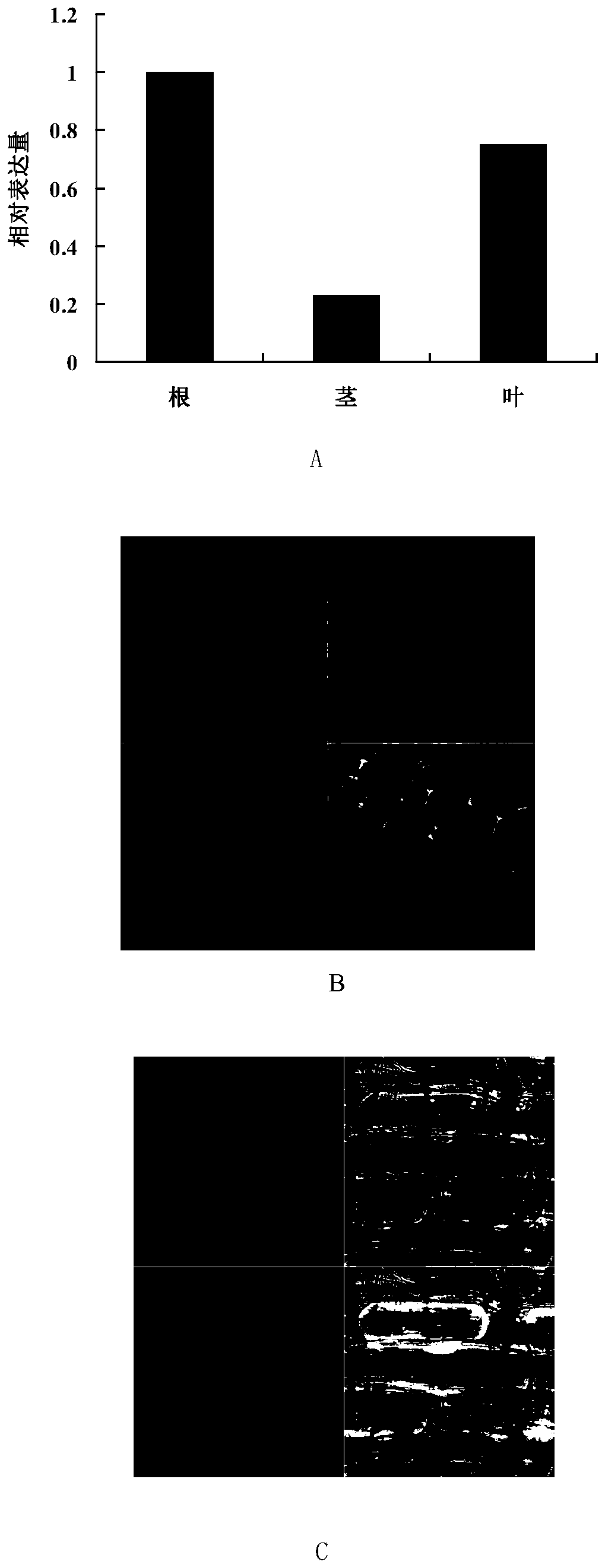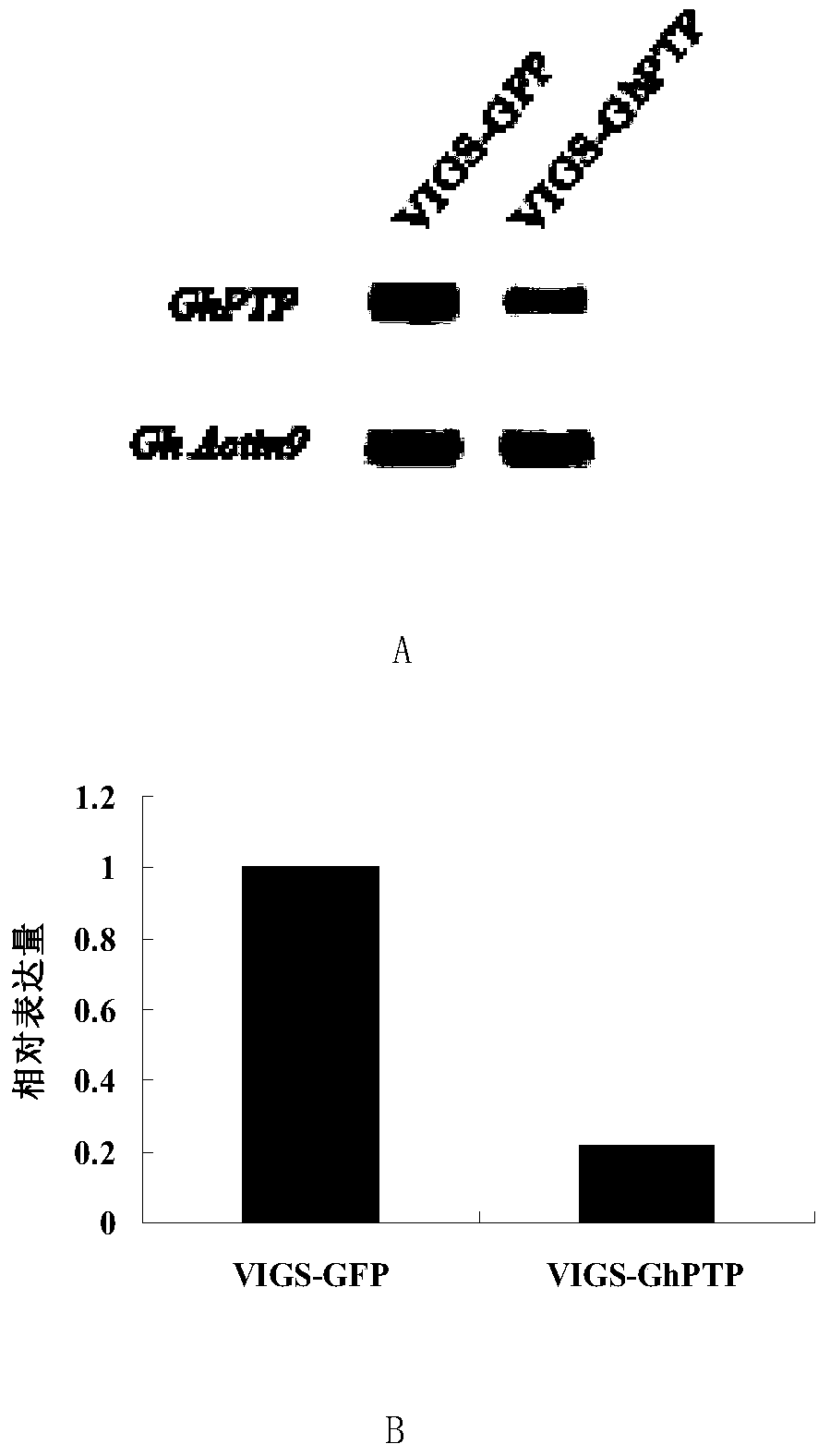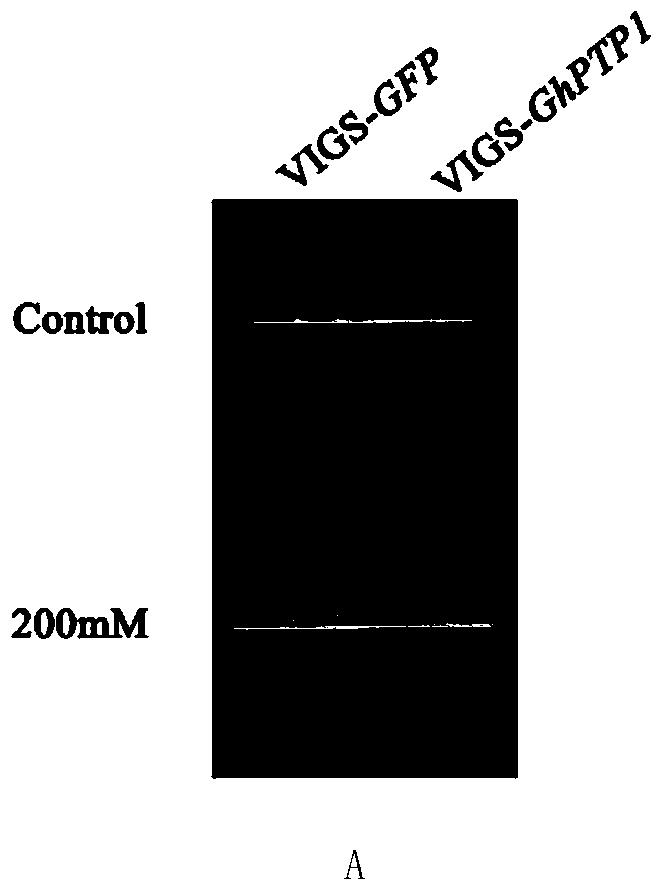Cotton tyrosine protein phosphatase ghptp1 and its coding gene and application
A technology for encoding genes and proteins, applied in the field of cotton tyrosine protein phosphatase GhPTP1 and its encoding genes and applications, which can solve the problems of not many, backwardness, etc.
- Summary
- Abstract
- Description
- Claims
- Application Information
AI Technical Summary
Problems solved by technology
Method used
Image
Examples
Embodiment 1
[0057] Example 1. Discovery, cloning and localization of GhPTP1 protein and its coding gene
[0058] 1. Cloning of GhPTP1 gene
[0059] 1. Design of primers
[0060] According to the GhPTP1 gene sequence obtained from the cotton database, two specific primers were designed: upstream primer: ATGAAGATCGAGGATTTGG and downstream primer: GCAAGCACGTGCTTCA.
[0061] 2. Extraction of RNA
[0062] The Huayueyang kit was used to extract RNA from the leaves of cotton (cotton variety "Guoxin 3") (the kit was purchased from Beijing Jiukangyuan Biotechnology Co., Ltd., and the extraction was performed according to the instructions provided).
[0063] 3. Acquisition of cDNA
[0064] Using the RNA obtained in step 2 as a template, the first-strand cDNA was synthesized with an M-MLV reverse transcription kit (purchased from Promega, operated according to the kit instructions).
[0065] 4. PCR amplification
[0066] Use the cDNA obtained in step 3 as a template, and use the primers designe...
Embodiment 2
[0083] Example 2, the acquisition of GhPTP1 silenced plants and their salt and drought tolerant phenotypes
[0084] 1. Construction of VIGS-GhPTP1 silencing vector
[0085] 1. Extract the total RNA from the leaves of the cotton variety "Guoxin 3" and reverse transcribe it into cDNA.
[0086] 2. Using the cDNA obtained in step 1 as a template, perform PCR amplification with a primer pair composed of F1 and R1 to obtain a PCR amplification product.
[0087] F1: 5’-C TCTAGA ATGAAGATCGAGGATTTGGG-3';
[0088] R1:5'-G GGTACC GCAAGCACGTGCTTCATGAA-3'.
[0089] 3. Digest the PCR amplification product obtained in step 2 with restriction endonucleases XbaI and Kpn1, and recover the digested product.
[0090] 4. Digest the pTRV-RNA2 vector with restriction endonucleases XbaI and Kpn1 to recover the vector skeleton.
[0091] 5. Ligate the digested product of step 3 with the vector backbone of step 4 to obtain recombinant plasmid pTRV2-GhPTP1.
[0092] The recombinant plasmid pTRV2...
Embodiment 3
[0127] Example 3, Acquisition of Transgenic GhPTP1 Arabidopsis and Stress Resistance Analysis
[0128] 1. Construction of recombinant plasmids
[0129] 1. Extract the total RNA from the leaves of the cotton variety "Guoxin 3" and reverse transcribe it into cDNA.
[0130] 2. Using the cDNA obtained in step 1 as a template, perform PCR amplification with a primer pair composed of F1 and R1 to obtain a PCR amplification product.
[0131] Forward primer: F1:5'-C TCTAGA ATGAAGATCGAGGATTTGGG-3';
[0132] Reverse primer: R1:5'-G GGTACC GCAAGCACGTGCTTCATGAA-3'.
[0133] 3. Digest the PCR amplification product obtained in step 2 with restriction endonucleases XbaI and Kpn1, and recover the digested product.
[0134] 4. Digest the Super1300-GFP vector with restriction endonucleases XbaI and Kpn1 to recover the vector skeleton.
[0135] 5. Ligate the digested product of step 3 with the vector backbone of step 4 to obtain the recombinant plasmid Super1300-GFP-GhPTP1.
[0136] The...
PUM
 Login to View More
Login to View More Abstract
Description
Claims
Application Information
 Login to View More
Login to View More - R&D
- Intellectual Property
- Life Sciences
- Materials
- Tech Scout
- Unparalleled Data Quality
- Higher Quality Content
- 60% Fewer Hallucinations
Browse by: Latest US Patents, China's latest patents, Technical Efficacy Thesaurus, Application Domain, Technology Topic, Popular Technical Reports.
© 2025 PatSnap. All rights reserved.Legal|Privacy policy|Modern Slavery Act Transparency Statement|Sitemap|About US| Contact US: help@patsnap.com



